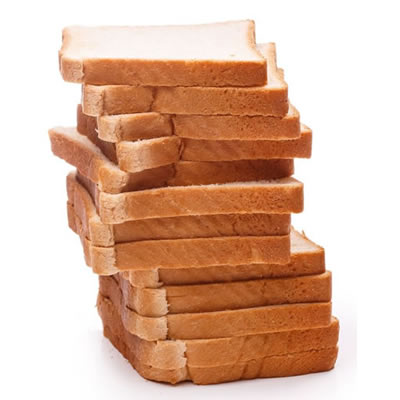Commercial production1
There are two sources of calcium carbonate: ground (GCC) and precipitated (PCC).
GCC production
- Extracted from the earth
- Ground either under dry or wet conditions for final product requirements
PCC production
This is mainly from three crystal polymorphs, including calcite (rhombohedral), aragonite (orthorhombic), and vaterite (hexagonal). PCC is produced by treating the residual CaCl2 from KClO3 with Na2CO3 and CO2.
Nutrition
This ingredient is rich in elemental calcium (40%). So, it’s used to fortify many food products.
Function
When added to bread dough, calcium carbonate can act as a dough conditioner and electrolytic balance modifier for soft water. This is important for reducing dough softening or stickiness.2 Other functions include:
- pH regulation and buffering effect
- Improving the nutritive value of baked goods
- Leavener by reacting with acids to produce CO2, especially in cakes
- Yeast nutrient in bread
- Activation of alpha-amylases
Application
Bread fortification with calcium is an effective health strategy to improve its nutritional value.
Functionally, this additive can improve crust appearance and color. However, it may negatively impact the taste of bread. Also, it can reduce the extensibility of dough, and soften it. Although calcium carbonate can provide necessary nutrients for bread yeast, it may inactivate the yeast at very high concentrations. Depending on the application, this form of calcium is usually added to the dry ingredients at 0.1% to 0.5% (baker’s percent).3
FDA regulation
Calcium carbonate is a GRAS ingredient. Its use as a food additive is regulated by FDA under 21CFR582.1191.4
References
- Erdogan, N., and Eken, H. A. (2016). Precipitated calcium carbonate production, synthesis and properties. Physiochemical Problems of Mineral Processing. 53 (2017), 57-68.
- How baking works-leavening agents. https://www.pps.net/cms/lib/OR01913224/Centricity/Domain/3997/Ch_11_Leavening_Agents.pdf. Accessed by Dec 04. 2019.
- Baking update. https://www.lallemand.com/BakerYeastNA/eng/PDFs/LBU%20PDF%20FILES/1_13DOUG.PDF. Accessed by Dec 04. 2019.
- CFR – Code of Federal Regulations 21CFR582.1191. Accessdata.fda.gov. April 01. 2019. https://www.accessdata.fda.gov/scripts/cdrh/cfdocs/cfcfr/CFRSearch.cfm?fr=582.1191&SearchTerm=calcium%20carbonate. Accessed by Dec 04. 2019.

